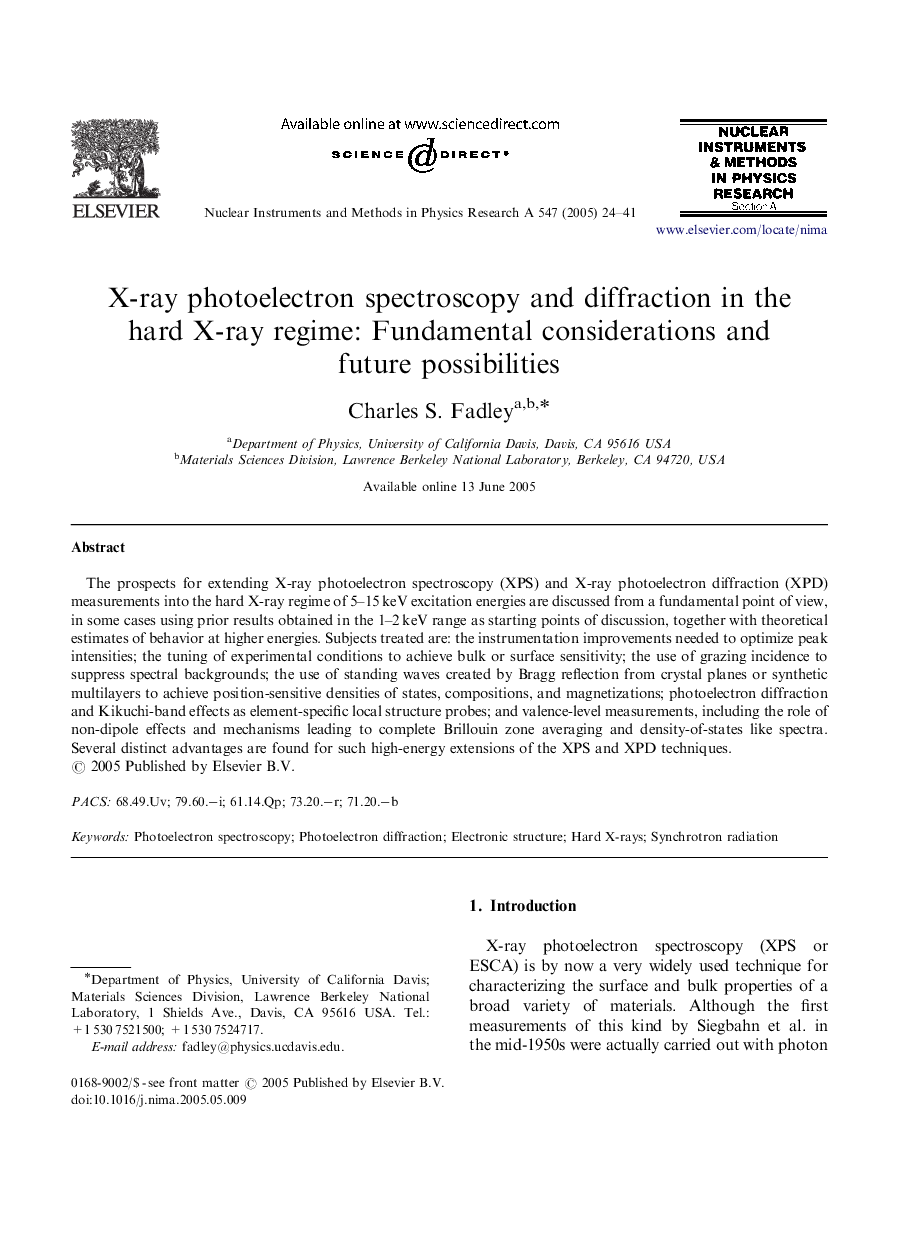| Article ID | Journal | Published Year | Pages | File Type |
|---|---|---|---|---|
| 10716188 | Nuclear Instruments and Methods in Physics Research Section A: Accelerators, Spectrometers, Detectors and Associated Equipment | 2005 | 18 Pages |
Abstract
The prospects for extending X-ray photoelectron spectroscopy (XPS) and X-ray photoelectron diffraction (XPD) measurements into the hard X-ray regime of 5-15Â keV excitation energies are discussed from a fundamental point of view, in some cases using prior results obtained in the 1-2Â keV range as starting points of discussion, together with theoretical estimates of behavior at higher energies. Subjects treated are: the instrumentation improvements needed to optimize peak intensities; the tuning of experimental conditions to achieve bulk or surface sensitivity; the use of grazing incidence to suppress spectral backgrounds; the use of standing waves created by Bragg reflection from crystal planes or synthetic multilayers to achieve position-sensitive densities of states, compositions, and magnetizations; photoelectron diffraction and Kikuchi-band effects as element-specific local structure probes; and valence-level measurements, including the role of non-dipole effects and mechanisms leading to complete Brillouin zone averaging and density-of-states like spectra. Several distinct advantages are found for such high-energy extensions of the XPS and XPD techniques.
Keywords
Related Topics
Physical Sciences and Engineering
Physics and Astronomy
Instrumentation
Authors
Charles S. Fadley,
